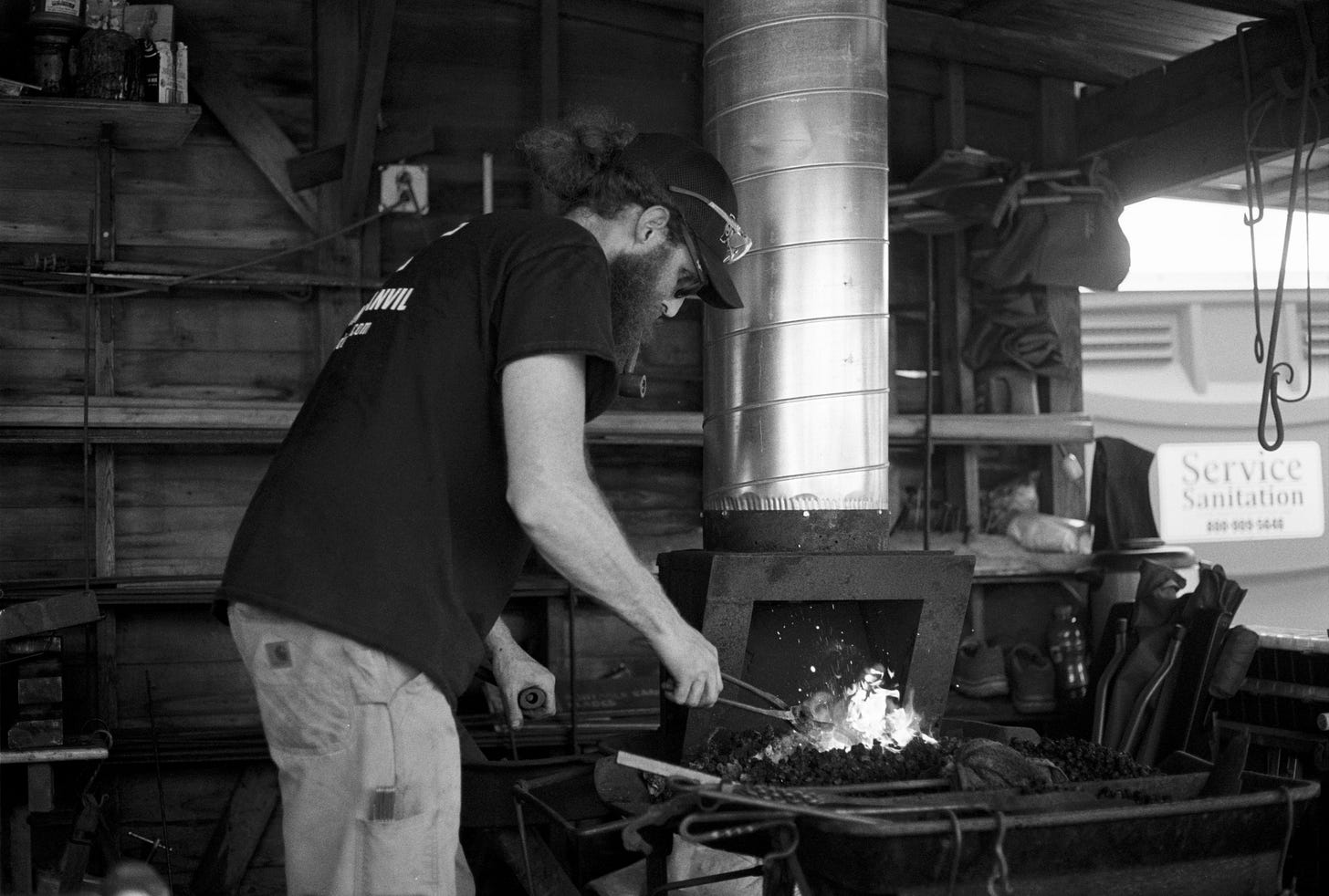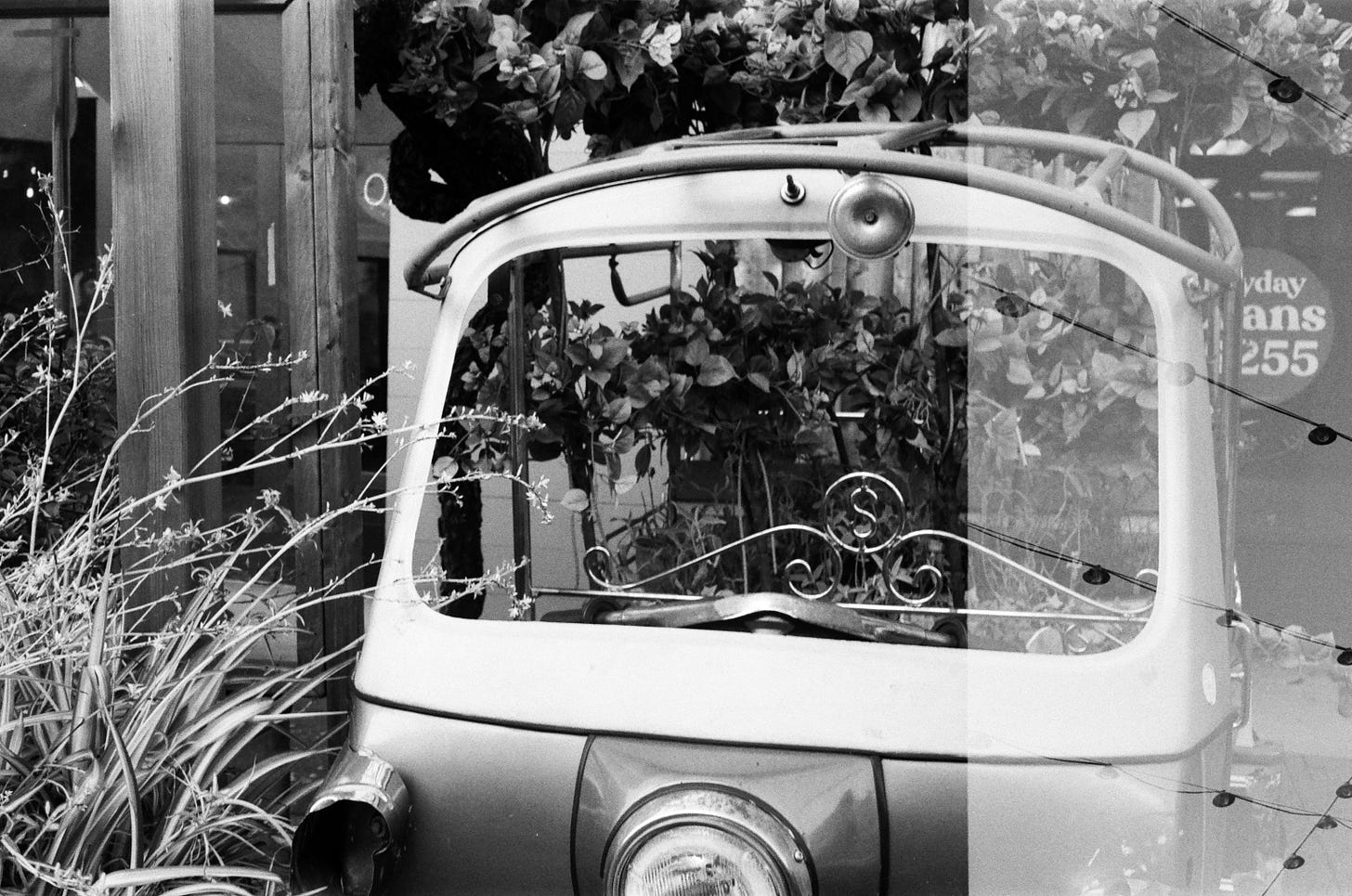Overview
Kodak Professional T-Max 400 is a tabular grain film which Kodak says is the finest grained 400 speed film. In their product line, it sits in contrast to Kodak’s Tri-X 400, which has a larger, more classic grain structure. It’s the first of the finer grain 400 speed films that we’ve shot, having only used Tri-X 400 and Ilford’s HP5 Plus previously, and is probably more comparable to something like Ilford’s Delta 400. It’s also more expensive than the former two at $11 for a 36 shot roll compared to $9 for Tri-X and HP5, but about a dollar cheaper than Delta 400 ($13-$14.50 depending on retailer).
Andrew’s Thoughts
Camera: Canon AE-1 (Canon new FD 50mm f1.8)
Development: Full Circle Fine Art
Scanning: Plustek 8200i SE, Silverfast 9
Most of the shots were taken on a trip to the Indiana State Fair, where light was in no short supply. I metered it around a half stop overexposed as I usually do, and was able to squeeze out 37 shots from the roll. I didn’t end up with many good photos from the roll, but through no fault of T-Max.
My impressions are in line with the usual observations regarding T-Max: slightly less grain and contrast compared to Tri-X. While this sounds good, I had multiple shots that I liked but felt were missing something. Tri-X has a certain moodiness that T-Max was missing. Also, I say “slightly less grain” because I didn’t notice that big of a difference without zooming in (at least with my scanning setup). If you’re viewing pictures on a phone or a smaller screen, I don’t think you’d be able to tell the difference.
I ended up with a scratch along the roll that may be visible in some shots, either from something in my camera or from the lab. I didn’t bother to edit them out, but it wouldn’t be hard to do so.
To be clear, T-Max doesn’t really do anything wrong. In fact, it’s technically quite excellent, and I recommend everyone try it out if they’ve only used something like Tri-X before. It could make for a good option for those that prefer a more modern feel or heavily edit their film photos, as it captures plenty of detail in both the highlights and the shadows.
I wouldn’t be opposed to shooting it more, but at $2 more than Tri-X or HP5 I don’t really have a reason to. Maybe I would try pushing it to 800 or 1600, though at that point it might make more sense to shoot T-Max P3200 (first impressions coming soon). A more apples to apples comparison with Delta 400 is also in the cards. For now, I’m in no hurry to shoot another roll, though I’d revisit it if I need the fine grain in the future.
Eric’s Thoughts
Cameras: Canonet QL17 G-III
Metering: EI200 (developed at box speed)
Development: Pro Photo Connection
Scanning: Noritsu (lab scanned)
All photos posted as scanned, no crops, edits, etc.
After finishing a roll of Ektar, I loaded my first roll of T-Max 400, excited to try a new 400-speed black-and-white film after HP5. My camera did some weird things advancing the roll, so while I got 36 exposures, I’m unsure if that number is particularly representative.
The contrast of this film is almost exactly what I’m looking for, striking a nice balance between contrast and shadow detail; if I could get an average contrast level between Tri-X and T-Max, it would be perfect. Additionally, it does a great job in lower light; underexposure doesn’t lead to super crunchy grain, and I felt that even in low light, shadows were not lost to black like some other films.


I love the detail on this film. As a consequence of the tabular grain, the detail was very crisp, while still retaining the distinct character of film. It works great for architecture, nicely rendering buildings and the shadows cast on them and by them.


I really like T-Max. Something about the images from this roll just clicked with me when looking through them. Arguably, I enjoy T-Max’s contrast profile a bit more than Tri-X, as it’s a little bit softer and has a contrast profile I enjoy. My only complaint is that the tabular grain really doesn’t have that “film grain” look that I get from Tri-X or HP5. This is a roll I see as a complement to HP5. If I want the contrast and tone, T-Max is the choice. If I’m looking for grain, HP5. Of note, contrast is easier to add in post, so HP5 probably edges out T-Max here, especially considering cost. The elephant in the room is Tri-X, which fits my grain preferences, though the contrast is ever so slightly too high. I’ve only shot one roll of Tri-X, and it was coupled with some camera issues, so pending some more rolls, HP5 remains the 400 ISO black and white king.













Thanks for the in depth review of T-max 400. I’m from Indiana and wondered how you ended up shooting there.